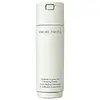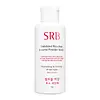What's inside
What's inside
 Key Ingredients
Key Ingredients

 Benefits
Benefits

 Concerns
Concerns

 Ingredients Side-by-side
Ingredients Side-by-side

Mannitol
HumectantSodium Cocoyl Glycinate
CleansingSodium Lauroyl Glutamate
Zea Mays Starch
AbsorbentSilica
AbrasiveBetaine
HumectantAllantoin
Skin ConditioningPotassium Laurate
EmulsifyingParfum
MaskingWater
Skin ConditioningDextrin
AbsorbentTrehalose
HumectantButylene Glycol
HumectantDisodium EDTA
Dipotassium Glycyrrhizate
HumectantButylphenyl Methylpropional
PerfumingLactobacillus Ferment Lysate
Skin ConditioningLimonene
PerfumingGeraniol
PerfumingSodium Hyaluronate
HumectantCamellia Sinensis Leaf Water
MaskingGossypium Herbaceum Extract
Skin ConditioningCI 19140
Cosmetic Colorant1,2-Hexanediol
Skin ConditioningEthylhexylglycerin
Skin ConditioningMannitol, Sodium Cocoyl Glycinate, Sodium Lauroyl Glutamate, Zea Mays Starch, Silica, Betaine, Allantoin, Potassium Laurate, Parfum, Water, Dextrin, Trehalose, Butylene Glycol, Disodium EDTA, Dipotassium Glycyrrhizate, Butylphenyl Methylpropional, Lactobacillus Ferment Lysate, Limonene, Geraniol, Sodium Hyaluronate, Camellia Sinensis Leaf Water, Gossypium Herbaceum Extract, CI 19140, 1,2-Hexanediol, Ethylhexylglycerin
Zea Mays Starch
AbsorbentSodium Cocoyl Isethionate
CleansingSodium Lauroyl Glutamate
Oryza Sativa Bran Extract
Skin ConditioningCitrus Grandis Seed Extract
AstringentPollen Extract
EmollientAllantoin
Skin ConditioningCollagen
MoisturisingBetaine
HumectantAloe Barbadensis Leaf Juice
Skin ConditioningSorbitol
HumectantIsopropyl Palmitate
EmollientAscorbyl Palmitate
AntioxidantCI 77891
Cosmetic ColorantCitric Acid
BufferingDisodium EDTA
Papain
Skin ConditioningParfum
MaskingZea Mays Starch, Sodium Cocoyl Isethionate, Sodium Lauroyl Glutamate, Oryza Sativa Bran Extract, Citrus Grandis Seed Extract, Pollen Extract, Allantoin, Collagen, Betaine, Aloe Barbadensis Leaf Juice, Sorbitol, Isopropyl Palmitate, Ascorbyl Palmitate, CI 77891, Citric Acid, Disodium EDTA, Papain, Parfum
 Reviews
Reviews

Ingredients Explained
These ingredients are found in both products.
Ingredients higher up in an ingredient list are typically present in a larger amount.
Allantoin is a soothing ingredient known for its protective and moisturizingg properties. Because of this, it is often added to products with strong active ingredients.
Studies show higher concentrations of this ingredient can promote wound healing.
Though it can be derived from the comfrey plant, allantoin is produced synthetically for cosmetic products to ensure purity.
Learn more about AllantoinBetaine is a common humectant (a substance that promotes retention of moisture). It's known to be gentle on the skin and can help balance hydration.
This ingredient is best for improving hydration and soothing irritated skin. Studies also show it helps even out skin tone.
Fun fact: Betaine is naturally created in the skin and body. The kind found within cosmetic products can be either plant-derived or synthetic.
Another name for betaine is trimethylglycine.
Learn more about BetaineDisodium EDTA plays a role in making products more stable by aiding other preservatives.
It is a chelating agent, meaning it neutralizes metal ions that may be found in a product.
Disodium EDTA is a salt of edetic acid and is found to be safe in cosmetic ingredients.
Learn more about Disodium EDTAParfum is a catch-all term for an ingredient or more that is used to give a scent to products.
Also called "fragrance", this ingredient can be a blend of hundreds of chemicals or plant oils. This means every product with "fragrance" or "parfum" in the ingredients list is a different mixture.
For instance, Habanolide is a proprietary trade name for a specific aroma chemical. When used as a fragrance ingredient in cosmetics, most aroma chemicals fall under the broad labeling category of “FRAGRANCE” or “PARFUM” according to EU and US regulations.
The term 'parfum' or 'fragrance' is not regulated in many countries. In many cases, it is up to the brand to define this term.
For instance, many brands choose to label themselves as "fragrance-free" because they are not using synthetic fragrances. However, their products may still contain ingredients such as essential oils that are considered a fragrance by INCI standards.
One example is Calendula flower extract. Calendula is an essential oil that still imparts a scent or 'fragrance'.
Depending on the blend, the ingredients in the mixture can cause allergies and sensitivities on the skin. Some ingredients that are known EU allergens include linalool and citronellol.
Parfum can also be used to mask or cover an unpleasant scent.
The bottom line is: not all fragrances/parfum/ingredients are created equally. If you are worried about fragrances, we recommend taking a closer look at an ingredient. And of course, we always recommend speaking with a professional.
Learn more about ParfumSodium Lauroyl Glutamate is the sodium salt from the lauric acid of glutamic acid.
It is a surfactant and helps cleanse the skin. Surfactants gather oil, dirt, and other pollutants from your skin so they may be washed away easily.
Zea Mays Starch is starch made from corn. You might know this as cornstarch . It is used to thicken a product. It can replace talc as an absorbent.
The pH of cornstarch is 5.92.
Cornstarch is a common food ingredient used to thicken soups or to make corn syrup.
Learn more about Zea Mays Starch